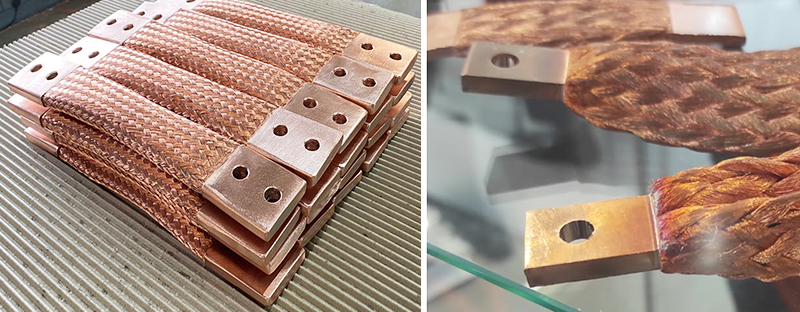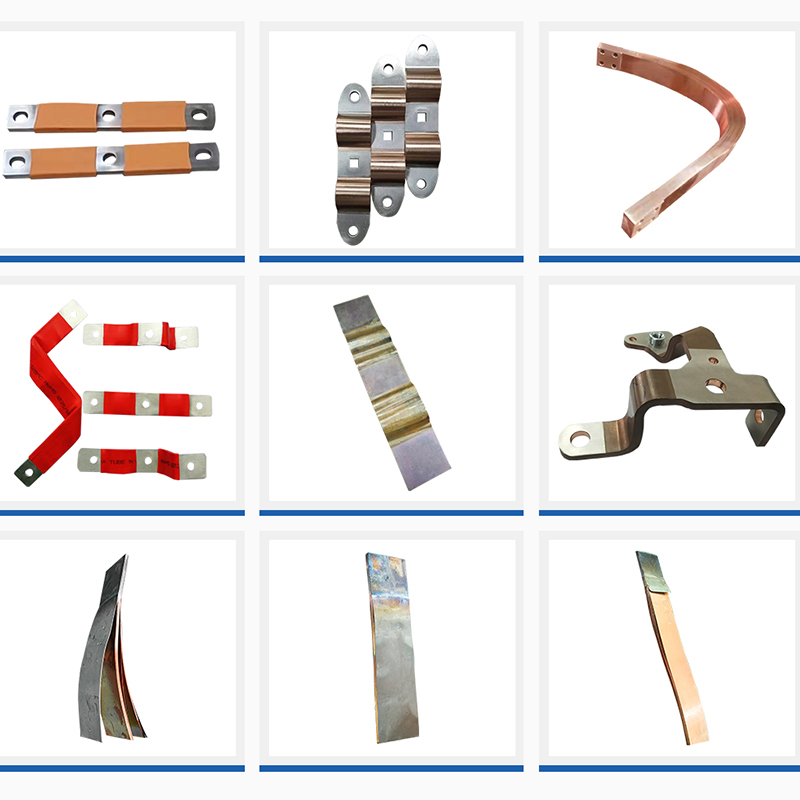Busbarsginn ëmmer méi am aktuellen neien Energiesektor benotzt, dorënner Industrien wéi elektresch Gefierer, Energielagerung, a Kraaftsystemer. Wéi d'Technologie fortschrëtt, hunn Busbar Materialien vu Kupfer op Kupfer-Néckel, Kupfer-Aluminium, Aluminium a Graphen-Kompositen evoluéiert. Dës Busbars vertrauen staark op Formen a Schweißen, well se musse mat Batterien, elektresche Kontrollsystemer an aner Komponenten verbannen. Schweess um Enn an Mëtt Rubriken ass entscheedend fir dës Verbindungen, matDiffusioun Schweessass déi primär Method fir Busbar ze bilden.
Zorte vu BusbarDiffusioun Schweess Equipement
Et ginn zwou Haaptarten vu Busbar Diffusiounsschweißausrüstung. Een ass Resistenzdiffusiounsschweißen, wat d'Basismaterial direkt duerch en héije Stroum erhëtzt. Déi aner ass Héichfrequenz Diffusiounsschweißen, wou d'Graphit erhëtzt gëtt an d'Hëtzt an d'Basismaterial transferéiert. Béid Methoden erhëtzen d'Basismaterial op eng gewëssen Temperatur an ënner héijen Drock bilden eng zolidd Phaseverbindung, fir den Diffusiounsschweißeffekt z'erreechen. D'Heizmethod benotzt hänkt vum Busbar Material of.
Resistenz Diffusioun Schweess
Resistenz Diffusioun Schweess gëtt haaptsächlech fir Kupfer Busbars benotzt, well Kupfer en héije Schmelzpunkt a Konduktivitéit huet. Fir eenheetlech Heizung ze garantéieren an de Prozess ze beschleunegen, gi Graphitelektroden benotzt. Déi iewescht an déi ënnescht Elektroden féieren héije Stroum un d'Kupferbusbar, erhëtzt et duerch Kontaktresistenz tëscht multiple Schichten vu Kupferfolie. D'Graphitelektroden selwer generéieren och Hëtzt wéinst hirer héijer Resistenz. Dës kombinéiert Heizung kann d'Temperatur vun der Kupfer Busbar op iwwer 600 ° C erhéijen, bis zu 1300 ° C erreechen, wat fir erfollegräich Diffusiounsschweißen ënner héijen Drock erlaabt.
Héich-Frequenz Diffusioun Schweess
Héichfrequenz Diffusiounsschweißen ass gëeegent fir Aluminium Busbars, Kupfer-Nickel Busbars, Kupfer-Aluminium Busbars, a Komposit Busbars wéi Kupfer an Net-Metal Kombinatiounen. Dës Method benotzt indirekt Heizung, sou datt et ideal ass fir komplexe Materialien ze schweizen. Bei Héichfrequenz Diffusiounsschweißen gëtt d'Graphit erhëtzt an iwwerdréit dann d'Hëtzt op d'Basismaterial, mat Temperaturen bis zu 1200°C. Ënner héijen Drock bilden d'Materialien eng zolidd Verbindung.
Diffusioun Schweess vu verschiddene Busbar Materialien
Kupfermaterialien si relativ méi einfach ze verschweißen wéinst der Stabilitéit vun hiren Oxiden. Décke Kupfer Busbars, sou wéi déi a Kraaftsystemer benotzt, erfuerderen Resistenzdiffusiounsschweißen wéinst senger héijer Heizeffizienz. Dës kënnen esou déck wéi 50mm sinn mat engem Schweißfläch vun 200x200mm. Dënn Busbars, wéi déi, déi an elektresche Gefierer benotzt ginn, typesch 3mm déck mat engem Schweißberäich vu 25x50mm, kënnen entweder Resistenz oder Héichfrequenz Diffusiounsschweißen benotzen.
Aluminium Busbars si méi Erausfuerderung wéinst dem Schmelzpunkt vum Aluminium (670 ° C) an dem vill méi héije Schmelzpunkt vum Aluminiumoxid (2000 ° C). Fir Aluminium gëtt héichfrequenz Diffusiounsschweißen normalerweis benotzt, mam Material dat virdru gereinegt gëtt fir Oxiden ze entfernen. D'Diffusiounstemperatur ass typesch ënner 600 ° C gesat.
Kupfer-Nickel Busbars besteet aus multiple Schichten vu Kupferfolie mat enger Nickelfoliebeschichtung fir Verschleiß- a Korrosiounsbeständegkeet. Héichfrequenz Diffusiounsschweißen gëtt allgemeng benotzt fir de groussen Ënnerscheed an der elektrescher Resistenz tëscht Kupfer an Néckel ze handhaben. Composite Busbars, wéi Kupfer kombinéiert mat Graphen, erfuerderen héichfrequenz Diffusiounsschweißen fir den Heizungsprozess präzis ze kontrolléieren an d'Basismaterialien ze beschiedegen wärend d'Diffusioun erreecht gëtt.
Drock Methoden an Busbar Diffusioun SchweessMaschinn
Diffusiounsschweißen erfuerdert héijen Drock, dee mat Loftflëssegkeet Boosteren, hydraulesche Systemer oder Servosystemer applizéiert ka ginn. Traditionell Methoden benotzen meeschtens hydraulesch Systemer fir hir stabil Ausgang an héich Kraaft. Hautdesdaags gëtt Servopressen ëmmer méi populär fir seng präzis Drockkontrolle an justierbar Verschiebung, déi héich Genauegkeet an de geschweißte Produktdimensioune garantéiert.
Conclusioun
Dëst ass e kuerzen Iwwerbléck iwwer Busbar Diffusiounsschweißen. Wann Dir no der richteger Schweißmethod fir Busbars sicht, sollt dësen Artikel e puer Äntwerten ubidden. Mat der kontinuéierlecher Entwécklung vun der Schweesstechnologie gi méi innovativ Techniken ugeholl fir d'Ufuerderunge vun der moderner Gesellschaft ze treffen.
Post Zäit: Sep-20-2024









